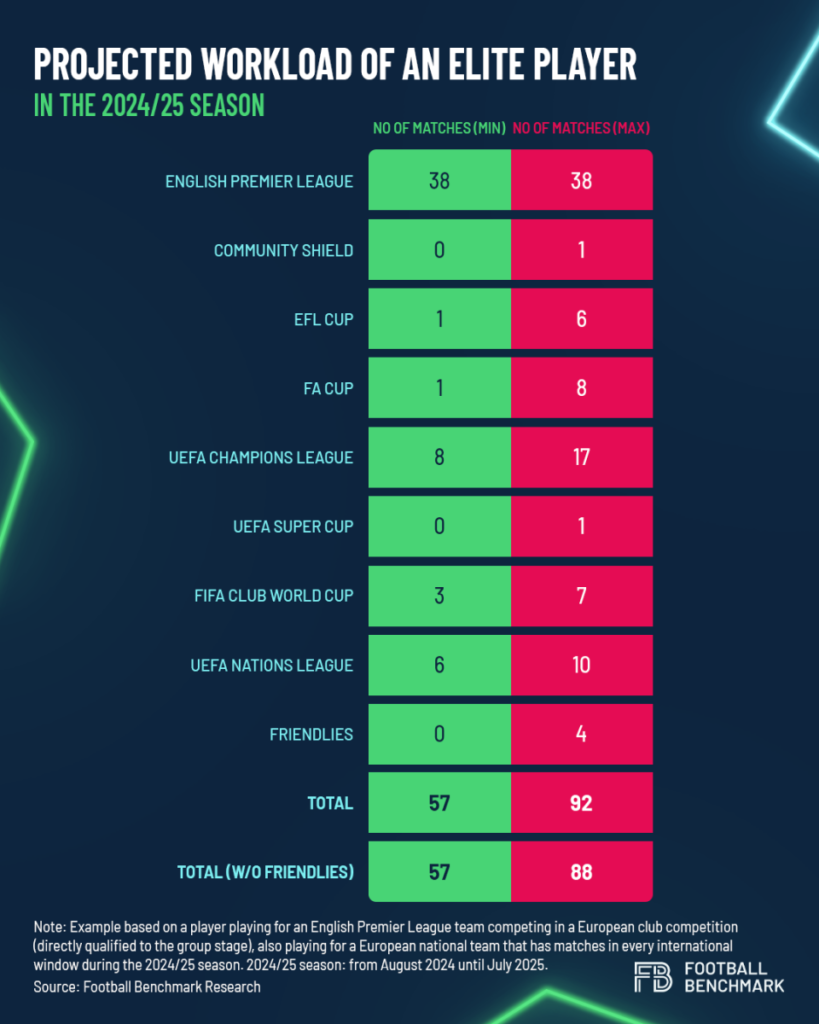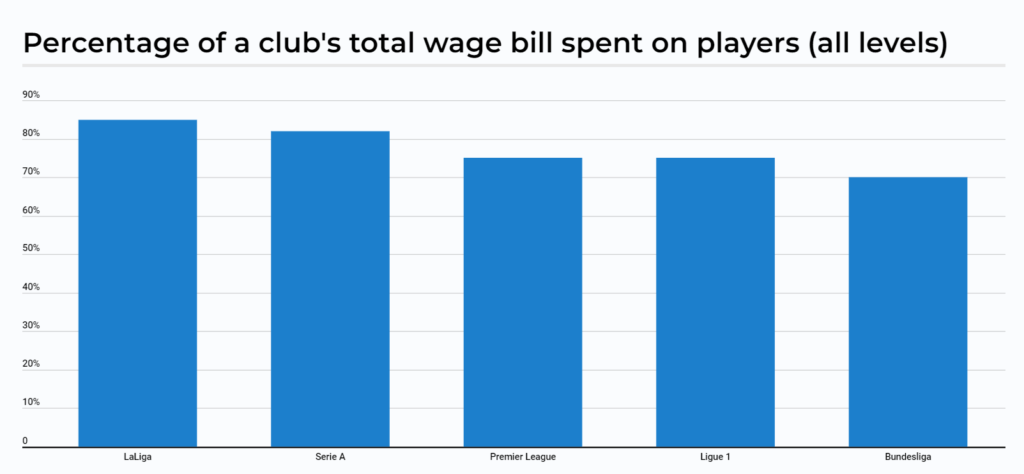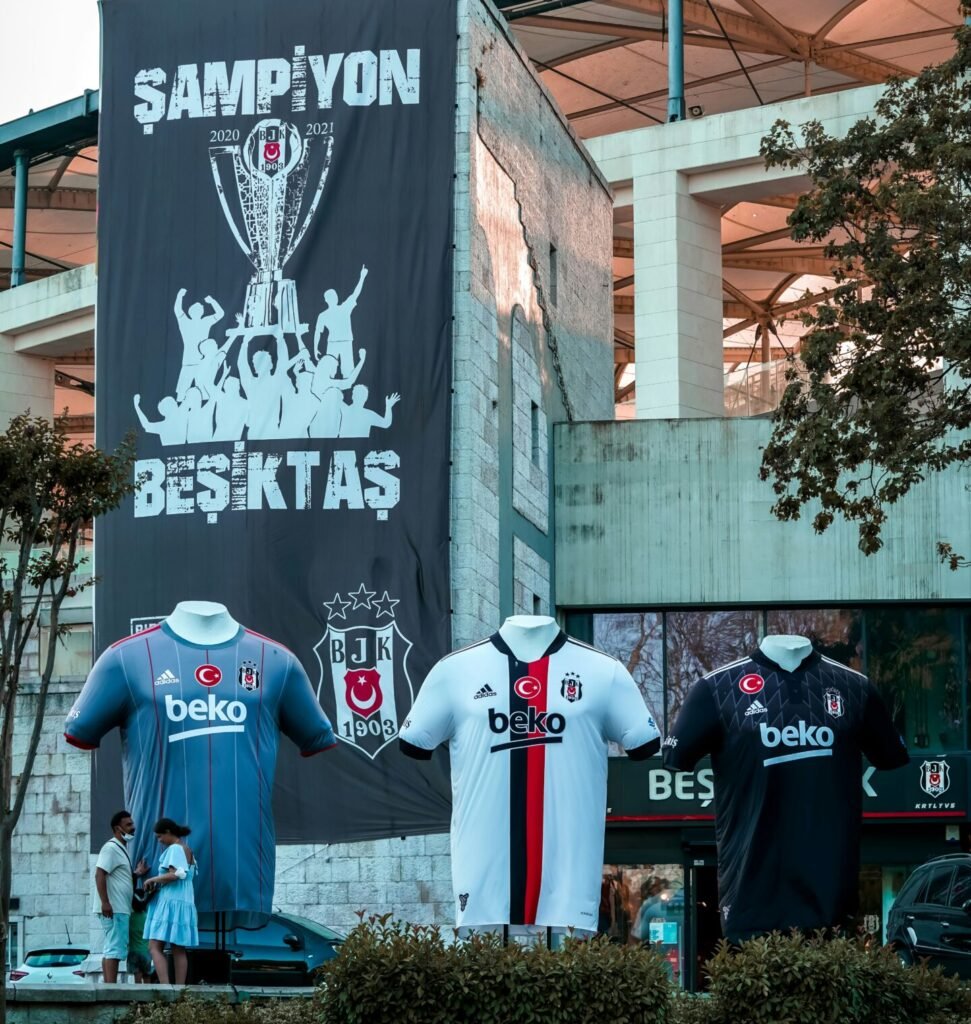The number of matches has become a hot topic in football, debated by experts, players, and fans alike. The packed calendar is a direct result of the expanded FIFA Club World Cup, EURO 2024, Copa América 2024, the Paris 2024 Olympic Games, and the new Champions League format. Even players like Rodri have voiced their concerns. The midfielder is suggesting that players are “close” to going on strike due to their increased playtime.
This year we could go up to 70, maybe 80 matches. In my humble opinion, that’s too much, he said.
Let’s put this in perspective. Top clubs like Manchester City, with their impressive performances across all competitions in recent years, could face up to 88 official fixtures this season according to the analysis by Football Benchmark. While it’s unlikely they’ll win every trophy, and therefore may play a few fewer matches, the number remains staggering.
Who’s to blame, and how does it tie into merchandise sales? Let’s break it down.

Players Themselves Are Part of the Problem They Are Complaining about
Karl-Heinz Rummenigge, a member of Bayern Munich’s supervisory board, recently shared an unpopular opinion. He suggested that players and their agents have backed themselves into this trap.
By constantly demanding higher and higher salaries, they force clubs to generate ever-increasing revenue. And where does this revenue come from? From more matches.
Although the public may not receive this well, the facts support his claim. Let’s look at it through the perspective of salary increases among top Premier League players over the past 10 years. The average annual base salary has risen from £1,502,694 to today’s £3,510,323, a staggering increase of 133.69%.

What’s even more troubling is that clubs spend over 70% of their earnings on player salaries. This situation has created significant issues. Particularly in Serie A, where the financial reports of the best clubs for the 2022/23 season indicated a staggering deficit of €427 million. Despite a €587 million boost from player sales, this was not enough to offset the losses. The 20 Serie A clubs reported total expenditures of €3.85 billion, with salaries representing a hefty €1.9 billion.

Clubs Need to Seek Alternative Income Sources as Commercial and Broadcasting Revenue Won’t Do It
Clubs naturally seek extra revenue to cover the increasing demands of player salaries. The challenge lies in identifying where to find this funding. Football clubs heavily rely on broadcasting and commercial earnings, which typically account for over 70% of their total income.
Negotiating increases in these two sources is quite challenging due to various influencing factors. Commercial revenue largely depends on a team’s present and past performance. When a club excels, sponsors are more inclined to enhance their partnerships, anticipating that more fans will be watching their games and becoming exposed to their brands and products. Additionally, improved performance also leads to higher competition prize money.
Those didn’t seem high enough for the clubs which decided to start the project of Super League which would have a higher revenue potential. Although the project ended with a fiasco and most clubs withdrawing their participation, it had an effect in UEFA changing the competition format to play more games and thus pay clubs more in prize money.
This naturally leads us to the second revenue source, particularly TV rights. In domestic competitions, clubs face limitations on their earnings due to collective broadcasting deals that are typically signed for 4 to 5 years. While these deals tend to increase with a new contract, they often require longer commitments and generally do not match the amounts paid out in American sports leagues.
Consequently, clubs find themselves needing to either increase the number of games played or agree to special matches abroad, such as the La Liga Super Cup held in Saudi Arabia, featuring four participating teams instead of 2.

Merchandise Sales Provide Football Clubs with Weekly Revenue They Have under Control
It is crucial for clubs to continue their efforts in growing the two key sources of revenue. However, they should also focus on areas where they have direct influence. One which we won’t cover in this article are youth academies, which help grow talent for the first team or provide future transfer opportunities.
We want to focus on the recurring revenue that clubs earn weekly from ticket sales, merchandise, and in-stadium refreshments. The key is to collect quality data about fan preferences and past purchases, as discussed in our recent article. Specifically, clubs should know which food and drinks each fan prefers and their average spending during games. This data enables clubs to send special targeted offers that fans can’t resist.
These strategies mostly work for the segment of returning visitors, but what about one-time attendees and international audiences? Medium and smaller-sized clubs often concentrate on their local fan base with a singular mission – selling as many season tickets and shirts as possible to past customers. This leaves opportunity on the table.
It’s like playing only on one side of the pitch, ignoring the free space on the other.
With a focus on their local fanbase and active attendees, clubs face a limited audience for merchandise sales, resulting in limited revenue opportunities. They could expand this by identifying fans who have yet to purchase merchandise and sending quick notifications encouraging them to visit the nearest fan shop at the stadium. While many of these visitors might attend only one game and not return, the club can still generate merchandise revenue from them. And who knows, maybe having that shirt could nudge them to support the club more in the future.

How to Identify High Potential Targets via Object Detection to Increase Football Merchandise Sales on Match Days
In our previous materials, we highlighted the advantages of linking a fan’s face to their club account for stadium entry. This is crucial because it prevents fans from transferring tickets to others without the club’s knowledge. One of the negative consequences of such behavior is having skewed data about the fanbase.
When you hand over your season card, which can also be used for payments, to a friend, the club assumes you attended the game and spent a specific amount on certain goods. In reality, you never went, and the data should be attributed to your friend. In the context of today’s article, the real potential lies in combining linked faces to accounts with cameras at the entrance for object detection.
Imagine a simple scenario where you create an account with the club’s app to buy tickets. It’s your first time at the stadium, so you arrive early to explore. As you approach the entrance and scan your face for entry, the camera detects that you’re not wearing a club shirt. This information is sent back to the system, which then sends you a notification. When you check your phone, it directs you to the nearest shop to purchase the shirt.
The combination of object detection and face recognition empowers clubs to identify specific opportunities for fan monetization. For example, the system can detect that a fan is wearing a club shirt but not a hat. This capability opens up new possibilities for cross-selling.
Conclusion on the Importance of Merchandise Sales
As football becomes increasingly focused on money, it has entered a vicious cycle that cannot be sustained forever. Eventually, the number of games cannot continue to increase, which will limit the potential for commercial and broadcasting revenue. If player salaries keep rising, clubs will need to seek creative ways to generate revenue. Concession and merchandise sales present viable alternatives, particularly when combined with a broader strategy to grow the international fan base.






